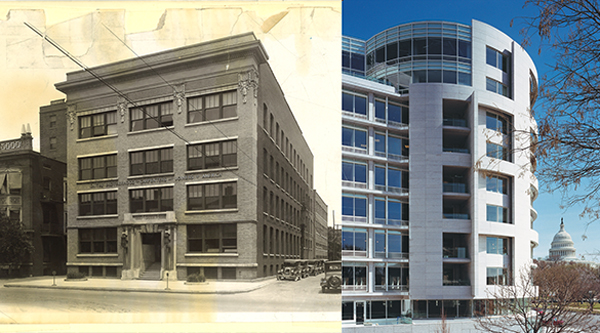What does it take to build a union….headquarters?

Like most new organizations, the UBC had a lot on its plate in the earliest years. Bringing in new members and representing them, against heavy odds, was top-of-mind. Our first General Secretary, P.J. McGuire traveled relentlessly. He set up shop wherever he could find carpenters to organize.
But a union needs an office with an address. For the first 80 years of our existence, from 1881 to 1961, the UBC called seven different street addresses “home.” Since then, we have occupied one of the most prestigious addresses in Washington, D.C.
Here is a look at our HQ history:
St. Louis, 1881
At our founding and for four more months, we operated from a provisional HQ at 911 19th Street.
New York City, 1881 – 1884
P.J. McGuire’s hometown became our HQ—and he settled permanently in New Jersey with his family.
Cleveland and Philadelphia, 1884 – 1903
The UBC spent two-plus years headquartered in Cleveland—and three addresses in Philadelphia housed the union for 12 years while the union gradually expanded.
Indianapolis, 1903 – 1961
This was one of the most populated cities in the U.S. when the UBC Convention of 1902 voted to move the headquarters to Indiana. Six years later, the UBC became the first international union in North America to erect its own headquarters building, at a cost of $100,000, at 222 East Michigan Street. Our membership stood at 178,000.
Washington, D.C., 1961 – Present
By the mid-Fifties, UBC convention delegates and officers were keen to establish “closer liaison with government offices on labor-related matters.” The union’s building committee found a fine location on which to break ground: 101 Constitution Ave., N.W. When the original five-story building opened in 1961, it was reportedly the closest privately-owned building to the U.S. Capitol.
Transformation in 2001
Under the leadership of General President Douglas J. McCarron, the UBC again took decisive action when, in 2001, we opened a newly constructed headquarters at the same Washington, D.C. address. The current building is more than twice the size of the original, but a much better use of resources—and has helped keep the union on a strong financial foundation since.